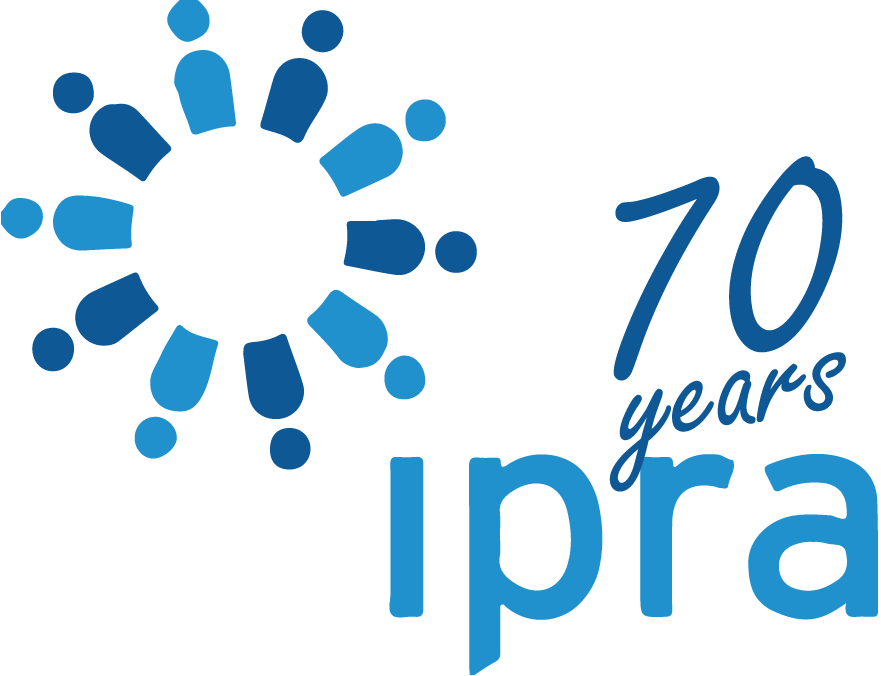ITL #633 The mesh revolution: a new model for PR in an era of industry contraction
4 months, 4 weeks ago
Conceptual environments where diverse expertise converges in unprecedented ways deliver exceptional results that traditional structures simply cannot achieve. By Jason Schlossberg.
In a concerning trend that shows no signs of abating, April 2025 marked the fifth consecutive month of job losses in the US advertising, public relations, and related services sectors. According to the Bureau of Labor Statistics, the industry shed another 900 jobs that month, bringing total losses to approximately 8,300 positions over the past year. This continuing contraction raises an urgent question for communication professionals worldwide: is this merely a temporary correction or a signal of deeper structural changes in our industry?
I believe it's the latter—and that's not necessarily a bad thing.
After co-founding and successfully selling an agency to one of the major holding companies, and having spent over two decades inside traditional agencies, I've witnessed firsthand how rigid organizational structures often impede innovation and excellence in our field. Layers of management stifle groundbreaking ideas, departmental silos prevent true innovation, and the relentless pressure to maintain billable hours takes precedence over creative excellence. The traditional agency model that shaped our industry for decades is collapsing under its own weight.
But this isn't a story of decline. It's a story of liberation and reinvention.
The mesh era: a new paradigm
I'm witnessing across the communications landscape the emergence of what I call the "Mesh Era," a revolutionary approach drawing inspiration from decentralized networks known for their resilience, adaptability, and lack of a single point of failure. In a mesh network, each node connects to multiple other nodes, creating a web of interconnections that can route around blockages and adapt to changing conditions.
This structure provides a powerful metaphor for how PR professionals can now collaborate, innovate, and deliver value in today's rapidly evolving marketplace.
The Mesh Era operates through three interconnected elements: Mesh Entrepreneurs, Mesh Collectives, and Mesh Spaces. Each plays a distinct role in transforming how PR work is conceptualized and delivered.
Mesh Entrepreneurs
The ongoing exodus of senior talent from traditional agencies creates a profound opportunity to redefine our careers and impact. I've begun calling these professionals "Mesh Entrepreneurs" because they operate differently from freelancers or independent consultants. These veterans maintain deep client relationships without institutional backing while creating flexible structures that scale through impact rather than headcount.
Several critical factors have converged to make this transformation possible now. Technology, especially generative AI, has democratized agency capabilities while lowering barriers to entry. Simultaneously, traditional agencies continue downsizing, freeing up experienced talent to pursue new models. Client expectations have evolved significantly, with more organizations prioritizing true partnership over institutional scale.
Mesh Collectives
Mesh Entrepreneurs frequently join forces to form what I term "Mesh Collectives." Unlike traditional agencies that assign teams based on availability, these project-centric collaborations assemble around optimal expertise for each specific challenge.
Leadership within these collectives operates on the DRI/E (Directly Responsible Individual/Entity) principle. The person with the strongest client relationship or most relevant expertise takes point on decision-making and ultimate accountability. This approach ensures clear leadership without bureaucratic layers, fostering a culture of shared responsibility among high-performing professionals.
Mesh Spaces
When Mesh Collectives form, they create something far more valuable than temporary teams. They generate "Mesh Spaces," conceptual environments where diverse expertise converges in unprecedented ways. These spaces exist beyond physical locations or formal meetings. They represent the intellectual and creative environment where genuine innovation flourishes unfettered by traditional constraints.
Traditional agencies rarely foster conditions for true innovation despite their designed offices and structured processes. While they may have access to diverse expertise on paper, their structure makes it inefficient and cost-prohibitive to bring multiple specialists to bear on a single challenge. Each capability added to a project increases cost without necessarily adding proportional value.
Mesh Spaces allow the assembly of precisely the expertise a challenge requires – whether that means pairing a behavioral scientist with a brand strategist, or bringing together an AI expert, cultural anthropologist, and creative technologist. These combinations create environments where ideas cross-pollinate freely, unconstrained by legacy cost structures and organizational boundaries.
The results of these Mesh Spaces are what I term "SuperOutcomes" – exceptional results that traditional structures simply cannot achieve. With the right expertise working in optimal combinations, clients experience dramatically improved outcomes that address their core challenges rather than fitting their problems into predefined service offerings.
Consider a recent example from my own experience: a company that had acquired several complementary businesses approached us with what appeared to be a marketing challenge—developing a unifying market positioning. Two previous agencies had failed to produce lasting results. Our Mesh Collective, combining expertise in business strategy, brand positioning, organizational design, and change management, quickly identified that the real challenge lay deeper: the company hadn't yet figured out how to truly integrate its acquisitions.
In a typical agency setting, this insight might have been noted but not acted upon—the scope and accompanying list of deliverables wouldn't allow for it. But our Mesh Collective expanded beyond the original marketing brief, developing not just a new positioning and brand identity, but also an organizational change program that helped the company restructure to deliver on its new promise. Less than a year later, the company had successfully integrated fifteen major projects and was using the framework to support additional acquisitions.
Scaling through ambition, not size
Traditional agencies have long equated scale with organizational size: expanding headcount, opening more offices, and building larger overhead structures. Mesh Entrepreneurs pursue a fundamentally different growth strategy. They scale through client and project ambition, taking on increasingly complex and impactful challenges without unnecessary infrastructure.
This approach creates compelling advantages for all stakeholders. Financial resilience improves as fixed costs remain low. Value distributes more equitably among the professionals doing the actual work. Quality control becomes easier rather than harder as collectives grow. Most importantly, professionals experience deeper satisfaction as they focus on solving interesting problems rather than maintaining organizational structures.
The path forward for PR professionals
We can view all of these changes through a lens of fear and uncertainty, or we can recognize them as a catalyst for embracing new models that better serve clients, professionals, and the communications discipline itself.
The Mesh Era offers a fundamental reimagining of how PR value creates and flows. Experienced professionals gain pathways to greater impact, autonomy, and fair compensation. Clients access elite talent without the overhead and constraints of traditional structures. The industry itself benefits from increased innovation as formerly siloed expertise combines in new, powerful ways.
This transformation has already begun across the communications landscape. Forward-thinking professionals now face a choice: wait for change to happen or actively shape the future of our field. In today's environment marked by fragmentation and disruption, the connected, adaptive, and resilient structure of the Mesh provides more than just survival tactics. It delivers a blueprint for unprecedented professional fulfillment and client impact.

The Author
Jason Schlossberg
Jason Schlossberg is CEO and co-founder of The ReadyMade Company, a pioneer of the Mesh Era approach described in this essay. Built on the principle that "What's Made is the Message," ReadyMade helps brands determine what they want to say, then builds the story, structure, and systems to communicate it clearly across all channels. He has over two decades of agency experience, including co-founding and selling an agency to one of the major holding companies.
mail the authorvisit the author's website
Forward, Post, Comment | #IpraITL
We are keen for our IPRA Thought Leadership essays to stimulate debate. With that objective in mind, we encourage readers to participate in and facilitate discussion. Please forward essay links to your industry contacts, post them to blogs, websites and social networking sites and above all give us your feedback via forums such as IPRA’s LinkedIn group. A new ITL essay is published on the IPRA website every week. Prospective ITL essay contributors should send a short synopsis to IPRA head of editorial content Rob Gray emailShare on Twitter Share on Facebook

